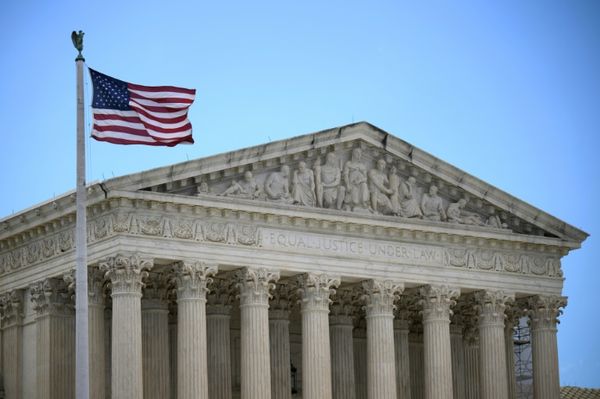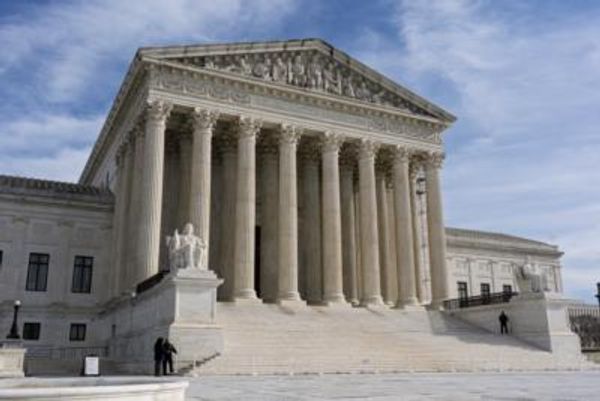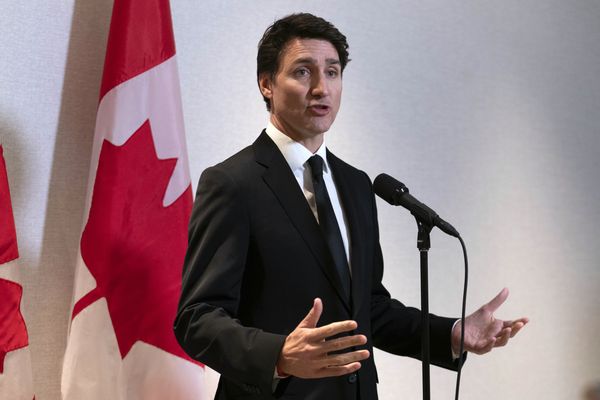
Bashar al-Assad, the defiant president of Syria, may never go on trial, at least not as long as his patrons in Russia don’t wish to replace him. But an ongoing trial in a German court in the quiet city of Koblenz against two regime officials, Anwar Raslan and Eyad al-Gharib, is slowly but steadily quashing any hopes that Assad may have had that Europe will normalize ties with his regime anytime soon. The trial is also giving millions of Syrian refugees in Europe, who have lived under the fear that they may be forced to return to their home countries, hope that their hosts may finally understand their vulnerability.
The court has been revealing, one witness at a time—in the testimony of survivors of torture in Syrian prisons, of relatives of those who were killed, of experts, and of regime insiders—the extent of the Syrian government’s crimes against humanity. For the first time, it’s possible for outsiders to perceive how, under Assad’s leadership, atrocities became a routine way of life.
On Sept. 9, day 30 of the trial in Koblenz, at 11:10 in the morning, the court saw its most important testimony to date. That was when a Syrian undertaker, part of a team that buried countless mutilated corpses, took the stand. His testimony detailed how the corpses were brought not just from al-Khatib, a state security intelligence directorate lead by Raslan in Damascus also known as Branch 251, but from multiple departments in Syrian intelligence services, including those of the military, between 2011 and 2017. For the safety of his family in Syria, the undertaker appeared with his face covered and is being described as witness Z 30/07/19.
Local and global activists had previously reported widespread torture of the civilian population, and a military photographer, codenamed Caesar, had already leaked 50,000 photos as evidence of torture and extrajudicial killings. Z’s contribution was to paint the picture of what followed. He told the court about the state he found the bodies in, what happened to them, and under whose command. Foreign Policy has accessed a copy of his entire testimony.
“There were rivers of blood and maggots,” exuding from the bodies, “once, I couldn’t eat anything for days.” Some corpses were totally rotten and their faces “unrecognizable,” as if they had been deliberately disfigured with a chemical. It is the stench of the rotting corpses that most disturbed him and continues to date. “The smell stayed in my nose, even after I showered at home.”
Witness Z was a small cog in the larger regime machinery that allegedly arrested peaceful protesters and anyone who was either with the opposition or even seemed to support it, tortured them in detention centers and prisons, executed many, and organized their secret burials. Z was a part of the last act. Unable to bear the stench of the corpses, he was tasked with transporting the men who buried the bodies and also to note down the numbers of the dead against the intelligence branch they had been brought from, i.e., the state’s secret services departments responsible for each killing.
Z was previously part of the Syrian administration in Damascus governorate burying those who died of natural causes until the uprising began in 2011. A few months after Syria was engulfed in anti-regime protests, he was approached by two intelligence officers to drive a van, without a license plate but covered in Assad’s posters, to graveyards on the outskirts of the city. In this van, with eight to 12 other men, he sometimes drove straight to the cemeteries of Najha and Qutiefa, and on other occasions first waited at the Tishreen and Harasta military hospitals. Parked outside, Z witnessed 35-feet-long refrigerated trucks stuffed with 200 to 700 corpses, usually accompanied by at least one military officer, and followed them to the cemeteries.
He remembered the graveyards looked like camps “with various army units.” The entry of civilians was prohibited. There was a checkpoint at the intersection that led to one of the burial sites, manned by an officer with “the rank of a colonel,” who recognized the van and waved him through. “The officer had instructions,” Z informed the court.
At the graveyards, Z’s colleagues, also hired by the regime, opened the refrigerated trucks and threw one corpse after another in a disorderly manner in 6-feet-deep and 160- to 330-feet-long trenches. “After about 40 to 50 loads, such a pit was full.” Four times a week, for six years at least, thousands of corpses were buried without a semblance of dignity. There were no relatives, no prayers, only a large hole in the vast desert in the countryside.
He corroborated the claims of Caesar, the military photographer who photographed corpses in military hospitals, when he told the court that every corpse had the number of the intelligence or military branch scribbled on the forehead and chest.
At the graveyards, Z assisted the regime officers on the spot in listing the numbers of the dead and where the bodies originated from. He named some of the most dreaded intel branches in the country, such as “al-Khatib,” “Palestine Branch,” and “from air force intelligence, including military intelligence—from all departments that belong to the Syrian regime.”
Sensitive to the overbearing smell of rotting bodies, Z stayed a dozen feet away from the ditches. But those killed in the infamous Sednaya prison did not smell. The officer who brought the Sednaya corpses from the hospitals had told Z that was because they had been killed the same day. They were still warm, with unmissable signs of torture that Z confirmed he had seen. Many were still handcuffed, with their toes and fingernails pulled out. “There were signs of execution on their necks,” Z said, a statement that corroborates the findings of the international nongovernmental organization Amnesty.
An Amnesty report released in 2017 found that thousands of people had been killed in mass hangings in Sednaya between 2011 and 2015. The trial of these victims lasted one to three minutes in two field military courts, and the days the prison authorities carried out the killings were referred to as “the party.” Philip Luther, the research and advocacy director for the Middle East and North Africa at Amnesty, counted several corroborations in Z’s testimony, including the time frame and the method of the killings. The Amnesty report found that the highest echelons in the government authorized the killings: “Death sentences are approved by the Grand Mufti of Syria and by either the Minister of Defence or the Chief of Staff of the Army, who are deputized to act on behalf of President Bashar al-Assad.”
Patrick Kroker, a lawyer fighting the case at Koblenz and the senior legal advisor on Syria at the European Center for Constitutional and Human Rights, which is supporting 16 Syrians in the proceedings, said there is no proof that the Syrian regime stopped committing these crimes—in fact, Z’s testimony is to the contrary. He said the trial is bound to impact broader European policy on Syria. For instance, Kroker said that to even entertain the idea of normalizing ties with such a regime feels repulsive. “Someone gives evidence that mass graves were still being dug until at least 2017,” he said. “This is the kind of government, the kind of regime, that you don’t establish relations with.”
He also highlighted the lasting legal importance of the trial and the revelations made in such testimonies and said the evidence laid out now will facilitate future trials against regime officials if they were caught traveling to Europe” “The individual acts of torture only constitute a crime against humanity if they are being committed within a specific context, that being a widespread and systematic attack against a civilian population. Z’s testimony establishes the crimes were systematic.”
At the end of the trial, even if the victory is symbolic and merely two mid-ranking regime officials are convicted, experts believe the evidence is beginning to influence refugee policy in Germany. In the light of such testimonies, it is harder for the populists to demand the refugees return to Syria. Bente Scheller, the head of the Middle East and North Africa Division at the Heinrich Böll Foundation, said every six months the interior ministers of federal states in Germany discuss the possibility of returning the refugees. “But from what we hear in trials on all that is happening in Syria it is absolutely impossible to deport people,” Scheller said, adding that there is a hope that the trial is softening German attitudes toward the refugees. “Nobody can say that they didn’t hear about it, that they were not aware.”
The Europeans are hearing more about the long-standing ordeal of Syrians and that they fled not just bombs and other privations of war but allegedly also rampant torture and brutal killings by the regime. Testimonies such as Z’s show how the killings were not random acts by some officers but crimes organized by numerous state bodies, with men like Z at the bottom of the food chain having little choice but to follow orders.







